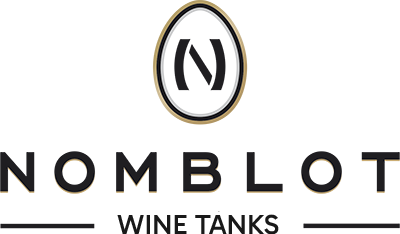South Africa is still a rather unknown wine region, even though it is the 7th largest wine producing country by volume.
One can find many of Nomblot’s Ovoid Egg-shaped concrete tanks in the wineries of South Africa. These tanks allow for space optimization of the winery, as well as offer a vessel that promotes the most natural vinification and aging of the wines.
The Ovoid tanks used in South Africa, and many other countries in the world, are available in two models: the MC7 and the MC17. The smaller tank is equipped with a lid and draining ports at the bottom of the tank, and the larger tanks includes these accessories as well as a man-door in the middle of the tank, allowing for easier racking and access for cleaning.
The Ovoid wine tanks, made of natural concrete, bring many advantages to the taste and aroma of the wine. The movement created by the tanks allows for heightened development of the wine during fermentation and aging.
A Fermentation without Stirring or Agitation
The natural concrete tanks allow for the natural phenomena of micro-oxygenation, by allowing microscopic air bubbles to pass into the interior of the tanks. This allows for the tannins of the wine to soften and accentuates the fruit aromatics of the wine. The result is a wine that has a rich texture while maintaining the freshness of the fruit.
As is true with all of Nomblot’s concrete tanks, the Ovoid tank offers an excellent thermal inertia. This guarantees slow and gradual shifts of temperature, allowing for healthy ferments and smooth aging of the wine lies.
The Ovoid shape also promotes a gentle current within the wine, caused by convection, due to the thermal inertia and geometric shape of the vessel. This movement allows lies to stay in suspension, limiting human interaction, and eliminating the need for lies stirring or agitation by the winemaker.
Wine tanks used
The model used in this winery is the vertical Ovoid Tank (Egg) MC Model. See all features.


